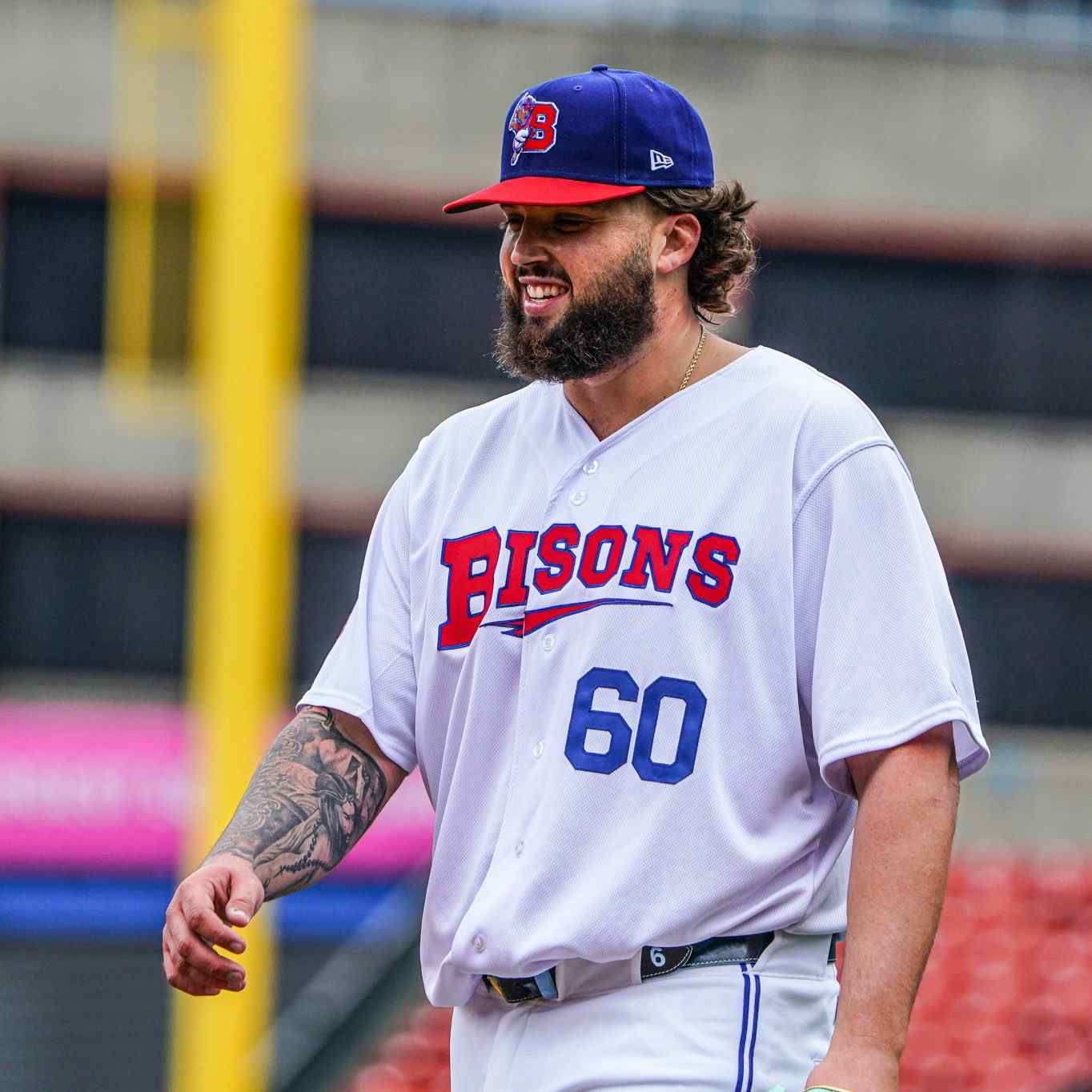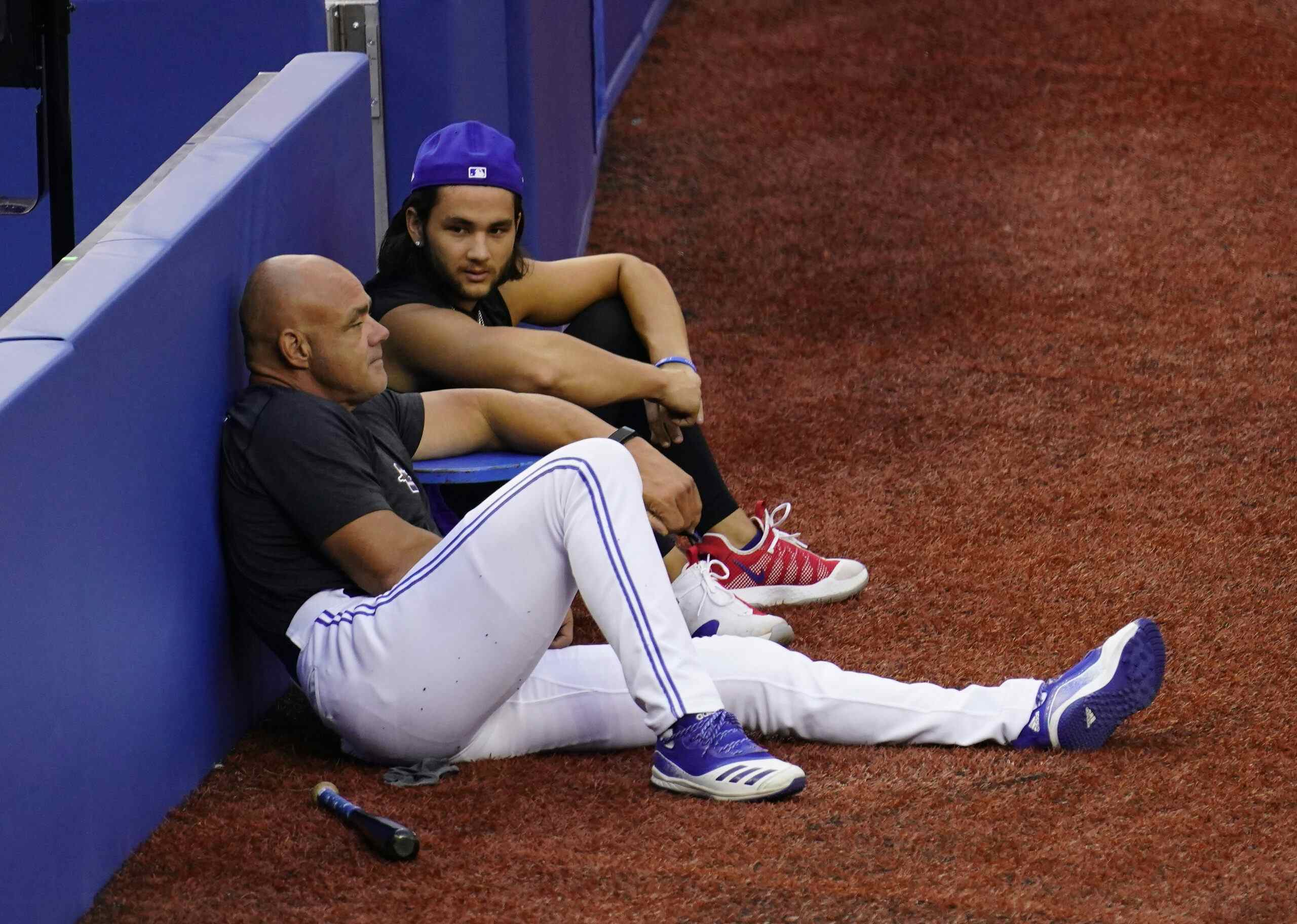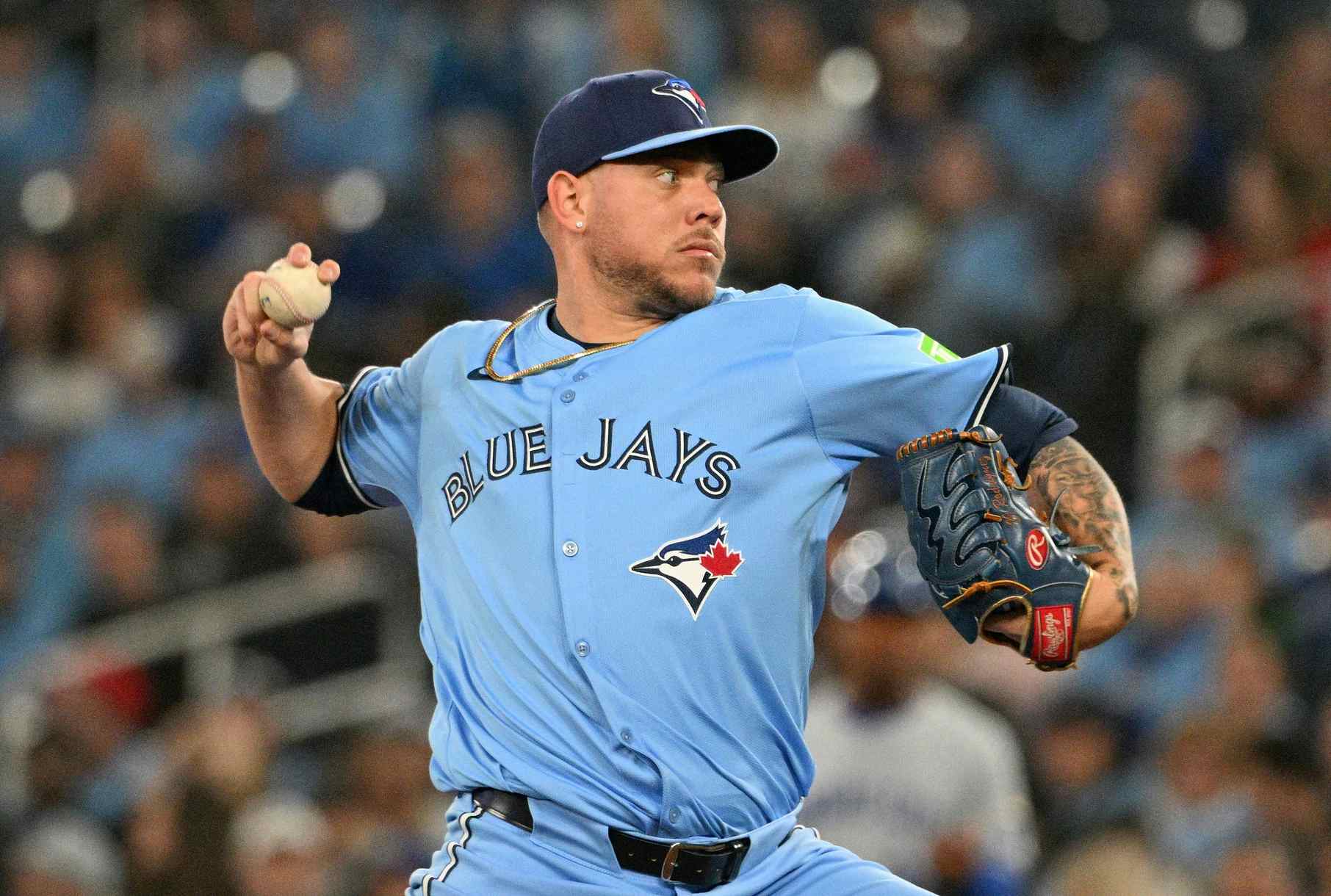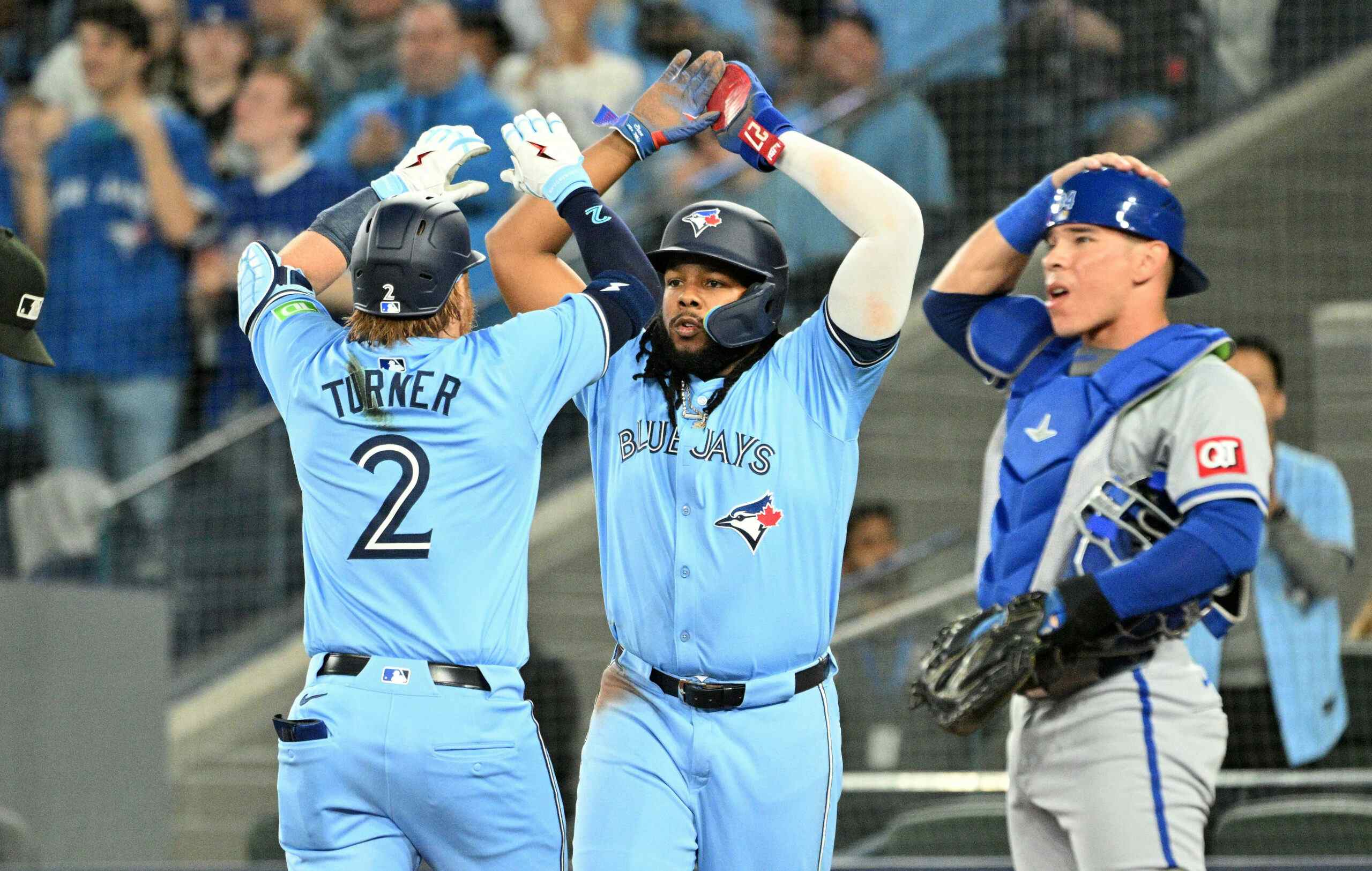Atkins Speaks!: On the Bullpen, Depth, the Future, and More Philosophical Interpretations Through the Anthopoulos Prism
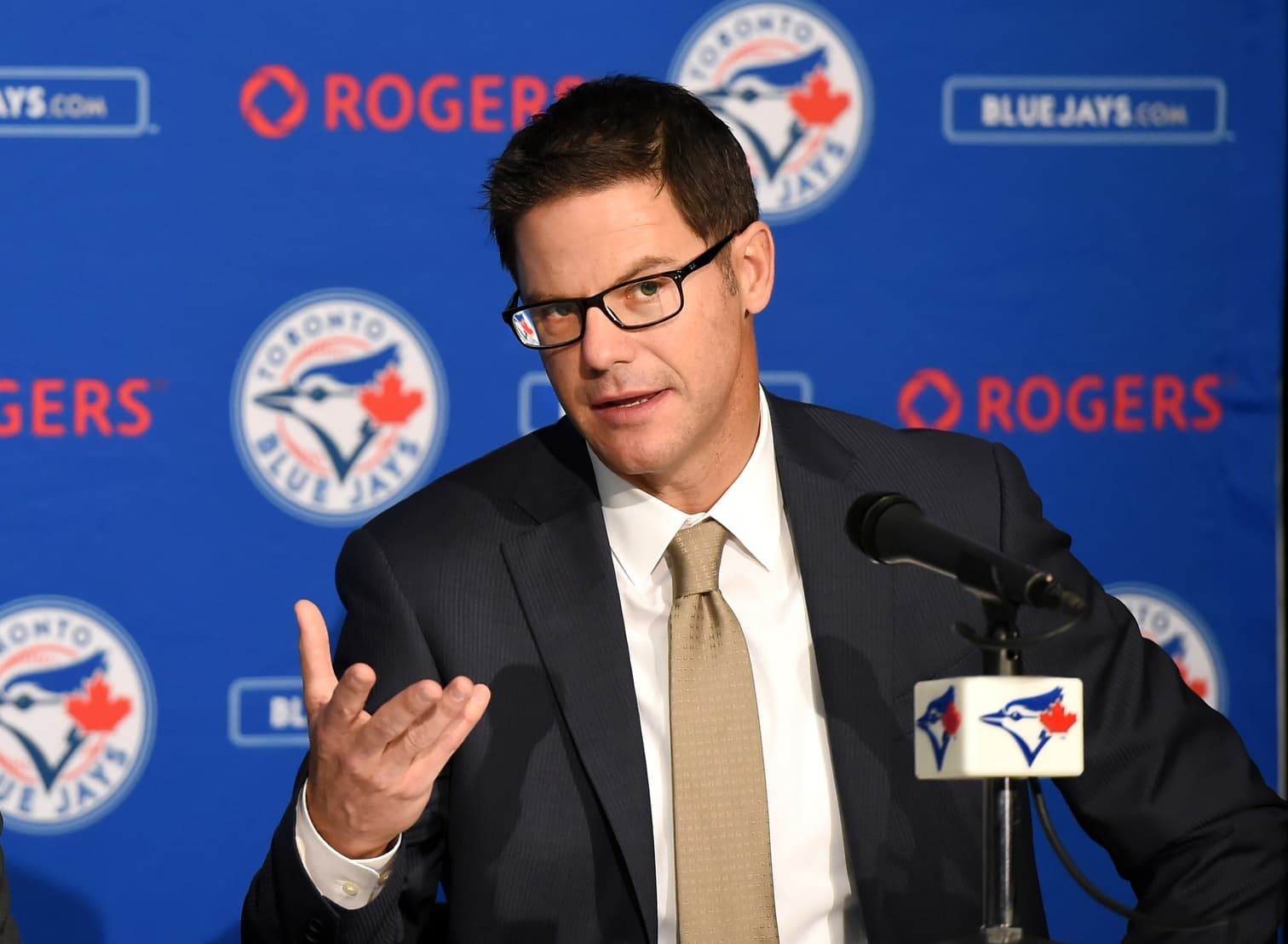
Ross Atkins is a sharp dude and we’re lucky to have him.
This is exactly the same thing I said about Mark Shapiro when I wrote about him last week, and once again I’m confident it will come off as hopelessly fanboy-ish to some. But so what? I think it’s the truth. And I think we can hear that quite clearly in the things that Atkins said when he visited Mike Wilner for a post-game chat on JaysTalk on Monday night.
In a lot of ways, this will serve as a companion to the Shapiro piece, because I think that Atkins’ interview with Wilner allows us to understand, perhaps better than we’ve ever been able to before, how he is the other side of Shapiro’s coin. In it Atkins seems as comfortable as I think I’ve ever heard him — partly, I assume, because he’s had time to grow more comfortable with his role, but also I believe because much of the conversation lands squarely in his comfort zone, focussing on details and player development — and if you listen carefully, like the interview with Shapiro, I think you’ll hear a lot of things that should make Jays fans feel very good about which side of the schism between the current and the past front office the club has now landed on.
As I hope I made clear in the previous piece, saying a thing like that isn’t necessarily about slamming Alex Anthopoulos or his methods. In no way am I saying that Alex Anthopoulos wasn’t a good executive, didn’t build an incredible team in 2015, or that he didn’t leave plenty of great pieces in place. But I think that Alex is the ideal prism through which to try to understand the new front office, because we knew him so well, and because there are some pretty clear contrasts to make.
One of the clearest contrasts comes in the simple fact that the Blue Jays now seem to have two executives doing the same job Alex was essentially doing by himself. Oh, I’m sure there were a few cigar-ash-covered files that moved from Paul Beeston’s office onto Mark Shapiro’s standing desk. But as far as baseball operations go, Beeston was surely all but useless, while Shapiro is still very much involved. This is relevant because the more we think about this stuff, and the more we see the new front office operate, the more it makes me wonder if Anthopoulos was maybe stretched a little thin. One of the reasons we knew Alex so well was because he was so front and centre. He wasn’t the face of the organization, but he was definitely one of them. The way it was depicted to us, he was the heartbeat of the front office (and the way it was told to me privately was that he ended up with a reputation as a bit of a micro manager). Alex was the one calling other GMs at all hours. He felt he had to go flying off to Japan to see Yu Darvish in person himself. He was dealing with the big contracts, the concepts, the strategy, the vision. But he was also dealing with the day-to-day details.
Or so it seemed. I don’t want to be too unfair to the former front office here. I’m sure there were lieutenants that he leaned on, lots of great work being done by an outstanding team of people, and I wouldn’t be surprised at all if their importance simply wasn’t as well understood by the fan base as it could have been. But what strikes me from listening to Atkins here is how clearly we can pick up the delineation between the person who shapes the strategy and the one who executes it. I’m sure there is overlap on those fronts, but it seems to me that in the previous front office there maybe wasn’t; that both aspects of the operation fell under the sole purview of Anthopoulos. And why I think that’s important — and why I suggest that Alex might have been stretched thin — is because (and maybe this is wrong and unfair and wishcasting on my part) there is a level of detail and understanding of players up and down the system that Atkins shows that I’m not entirely sure was always present to quite this degree before.
In the interview I wrote about last week, Shapiro told Mark Feinsand of MLB.com that “if you want to have a sustainable, championship team, you’d better be paying attention to the details — all of them, up and down the organization.” As you’ll see, Atkins comes off as being a disciple of that.
Part of that, one suspects, comes down to his background in player development.
As I mentioned in the previous piece, in 2013 then-new Red Sox manager John Farrell (in response to a question at Saber Seminar asked by Jays Twitter’s own @PramitBose85!) gave what I think is the most important quote about the Blue Jays’ front office of at least the last decade.
There are very distinct differences and it starts, I think it starts, at the top. And the reason I say that: I found Toronto to be a scouting-based organization, which to me is on one plane, one-dimensional. You’re looking at tools. Here, it’s a player-development based system. It’s the paths of the individuals that are running the organization. And that’s not to be critical.“We all know that there’s three different veins in this game that people advance (through): baseball operations, scouting, player development. Well, in the player-development vein, you’re going to look at things in three dimensions: mentally, physically, fundamentally, to address and develop people, or develop an organization. I think as a scouting base, you go out and you evaluate the physical tools. And that’s kind of where it ends, or that’s the look at that time. That was my experience, that was my opinion.
“Farrell may have lost the battle, in terms of defining his vision of the Blue Jays’ front office,” I wrote last week, “but his fellow player development people have won the war.” And by their own definition, then, there needs to be a deeper understanding of the organization and its players and staff and their needs.
This is even more apparent in what I’d say is probably the second most important quote about the Blue Jays’ front office of at least the last decade. It came last August from Dalton Pompey, during the course of a great interview with Catherine Stem of Jays From the Couch:
JFtC: Is there a difference now that the regime has changed? Do you feel your development is being handled differently?DP: Yeah, I think it’s a lot different than when Alex (Anthopoulos) was here. When Alex was here I felt like it was more about – not that it isn’t a business overall – but he kind of treated everybody like a business piece. It was a lot different. I never really talked to him at all, but these new guys, I talk to Ross Atkins a lot and he’s really in tune with my routine and what I’m doing to prepare myself for the game and let the results take care of itself. There’s kind of a different mindset to what they do and I think that’s just because they came from the (Cleveland) [baseball franchise], where they are really big on development. It’s definitely helped me out a lot.
Pompey highlighted what may have been some organizational blind spots when it comes to development elsewhere in the interview, lamenting the way that he got to the big leagues so quickly, “because obviously the goal is when you get there you want to stay there, instead of being up and down up and down like I have been,” telling Catherine this:
When I look back there’s sometimes where I wish I had’ve had a little bit more experience [before I got to the big leagues]. Obviously 2014 was great but there was a lot of stuff in 2015 that I never saw before you know? Guys throwing me back door cutters, front door two seams, backfoot sliders with consistency, mixing their pitches – I’m not always getting a 2-0 fastball – stuff like that. Those are things I never really learned because I was in high A for half the year and guys fall behind, they just throw you a fastball you know? I can hit a fastball. It’s just about thinking with the pitcher and trying to figure out what he’s going to throw you, and sticking with your approach.
All of this is to say that the Blue Jays are becoming — or have become — a “player development organization” now. And Atkins is obviously central to that.
It comes across. And it comes across that there is maybe a different approach to communication, up and down the organization, as well. And that maybe those are both pretty good things.
All of that said, I want to be careful not to rewrite history, or — like I say — be too harsh on the guy who brought this city and this country its greatest baseball joy in a generation and completely revitalized the fan base and the sport in the minds of a great many Canadians. I don’t know that Shapiro and Atkins could have done that. I certainly don’t think they would have done it the way that Alex did — which was fucking magical. So don’t get me too wrong in all this. It’s not an exercise to shit on anybody, I’m just giving you my interpretation (perhaps with some historical blinkers on) of what it was like before, and (perhaps with some fanboy blinkers on) what it’s seems as though it’s like now. (And telling you that I really feel good about the now.)
Maybe you won’t quite see it the way that I think I do. Maybe you didn’t in the Shapiro piece either. Maybe this is all actually pretty standard GM stuff! That’s fine. But I think it’s at least undeniable that what we can see from it is that there’s a whole lot of experience and a whole lot of thought being put into what they do. And, contrary to what the biggest fucking dopes in the fan base will insist, it genuinely does feel like the franchise is in pretty good hands. (Not that it necessarily wasn’t before.)
OK. Got it? Good!
Now, finally, here’s what Ross had to say, along with a few more of my dumb thoughts on it — often as it relates back to all that we’ve discussed to this point.
On Dominic Leone…
Really fun to see Dominic Leone out there tonight in the night — that was impressive. Huge strikeout to Davis.
. . .The acquisition cost [which Wilner had asked about] was nice, as well, but he’s been lights out all year. It’s something that we’re confident will be there next year, as well. 94 to 96 mph fastball with a slider with a ton of depth to it. He’s gotten better against left-handed hitters as of late.. . .The easiest thing about pulling for players is when guys are as committed as someone is like Dom. He’s as hard working and as consistent of a human being, win or lose, regardless of his success or failure, he is the same guy every day, so he’s an easy guy to pull for.
On “dumpster dive” acquisitions…
You have to have reason to think there’s going to be bounce back — not hope. And when you can look to find something fundamental, something that you know about a player, something that you see in a delivery, something that you see in an approach that gives you reason as though there can be bounce back to get back to that form, that’s what we’re looking for. It’s not rolling the dice and hoping. There are things objectively that are encouraging, and then subjectively there are things that are exciting to us about helping a player get back to a certain level of performance, or — even better than that — better than they were before.
On Luis Santos…
He’s been Bobby Meacham’s radar, he’s been on Gil Kim’s radar, Steamer down in Triple-A — these guys have been talking about him all year, and he’s come up a ton over the course of the year. He was actually in the Dominican Republic, delivering his first baby, when we called him and told him he was coming to the big leagues — or, he wasn’t delivering, obviously — but, you know, he’s been awesome. And so much of this, as you’re seeing with these guys, and Carlos Ramirez and Richard Ureña and Teoscar Hernandez, they look relaxed. They look like they’re playing like themselves, like they’re not trying to do too much, and have a ton of confidence. You get away with a lot when you’re aggressive and you’re saying “here’s what I got, let me see what you can do.” That’s been one of the most encouraging things is to see these guys aren’t pressing, they’re not trying to do too much. And in the case of Luis Santos, his stuff has ticked up a bit, going to a ‘pen role, where his velocity is up to 96, the depth to his breaking pitches has been very good, and very encouraging to see how athletic and how aggressive these guys have been.
I don’t want to come off like I’m trying especially hard to see good in something pretty banal, but based on these comments there seems clearly to be a lot of healthy communication going on throughout the organization. And you can certainly see the development background in the ways that Atkins talking about the things he’s looking for in fresh call-ups.
As for Santos, who he’s clearly excited about (in as much as one can be excited about a piece like Luis Santos), and whether he’ll stay a reliever or return to being a starter:
We’ll see. I think he’s been really so good in this setting, I think what he is solidifying for us is that he needs to stay on our roster. He’s definitely an asset to the organization based on what he’s done this, and what we’ve seen in this short stint. So we’ll see, it’s hard to say. But the fact that he can do both is extremely encouraging. But man, if he continues to pitch this way, it would be difficult to take him out of that role. It all depends on free agency, it depends on Joe Biagini, it depends on — there are a lot of factors we have to balance before we commit to that.
On Carlos Ramirez…
I don’t believe in luck, but there has to be some level of good fortune to have 45 scoreless innings. You have to have had some balls hit hard at people. His stuff, objectively, doesn’t jump off the charts. When you look at — whatever the metrics are, PITCHfx or if you just watch the radar gun, or if you just watch from the stands, there’s nothing that’s jumping out at you saying “this guy is going to dominate.” But you watch the swings and you quickly see why he has 45 innings scoreless. They just don’t see the ball well, they’re not getting good swings. He obviously has a great heartbeat, he’s extremely aggressive. He doesn’t throw balls — he throws it over, man. So he’s been great.. . .He’s definitely got some deception. His slot’s a little bit lower, where it’s coming a little bit out of his jersey. And there is no doubt about it, he’s got some deception.
This, I thought, was great. Not because I’m over-the-moon excited about Ramirez, but because I think Atkins is being pretty straight up here. Which is not to say it’s a contrast with the previous guy! It’s just kinda nice — and it lends credence to the positive things he says about his players. You always have to take a GM’s assessment of his team with a grain of salt, regardless of who it is, but this seems a pretty reasonable interpretation of Ramirez — one that’s maybe not quite in line with the awe he’s inspired among the fans who’ve been closely following his progress this year. That’s probably a good thing.
Atkins had more to say about Ramirez, too, as Wilner asked him about his conversion from outfielder into a pitcher — an obviously very good decision made three years ago, under Anthopoulos, but one that Ramirez went into reluctantly:
Usually those don’t work when it is a player that you’ve exhausted the position player avenue. Usually it’s a tough decision when they work — whether it be a position player conversion to a different position, or from position player to pitcher — usually they work when it’s a very difficult call. In the end, if it just comes down to “this guy has a good arm and we have the arena to give the opportunity,” that can happen really quickly, and you can see very quickly what the aptitude is, what the athleticism is, what the feel for secondary weapons are. But ultimately, all of those things, on some level, will factor in. And there’s a scale to opportunity cost — whose innings is he going to be taking away. But in the case of someone who hadn’t performed that well, as an offensive player, it seemed like a logical decision to try that. We’ve had some good stories in player development this year, and this is certainly one of them.. . .His slider, if you talk to him about the development of his slider, and when that came about, and his feel for it, that’s a separator for him. He’s not throwing 97-98, he’s throwing 92-93, but he has a very late, very tight, very small slider. I wouldn’t call it a trick pitch [a term that only arose because Wilner had just relayed a story about Tim Wakefield’s conversion into a pitcher] but it’s an unusual pitch, because you don’t see swings like that too often in the major leagues.
Still maybe a bit of reluctance to praise him there? Still a bit more effusive when he was talking about Leone and Santos? Interesting…
On not giving these relievers chances sooner…
Our ‘pen’s been pretty good. We haven’t had the concrete opportunities for guys to come in. I mean, Dominic Leone, Ryan Tepera, Roberto Osuna — I mean, he’s going to be our closer, we’re not going to take him out of that role. Matt Dermody’s been great, Mayza has been effective — you look at the strikeouts and walks; the runs are high but he’s dominating some of the hitters he’s facing. Danny Barnes has been fine. So, we haven’t had a lot of opportunities to upgrade our bullpen.
Not that you asked, but just in case you were going to, Osuna’s still our closer!
Also, again, I think you can tell who he’s been the most excited about.
This comment then quickly pivoted into a thoughts about the roster and the season as a whole.
On depth (the first time), and also… wait, what?…
[The bullpen has] been one of the strengths, outside of Justin Smoak — and Steve Pearce and Zeke have been a pretty good left field for us. Kevin Pillar has been Kevin Pillar. And the injuries that we’ve experienced — the Devon Travis, and Troy Tulowitzki, and Russ Martin, and earlier on to Josh Donaldson — those are the opportunities that we’ve had that we haven’t been able to overcome this year. I think we’ll be in a better position, as you can see now, to overcome some of those, with the emergence of guys like Teoscar Hernandez, and Richard Ureña, Danny Jansen and Reese McGuire, and some of the young pitchers in Tom Pannone and Ryan Borucki. I feel like we’re going to be in a much better position, in the event that we have injuries, to weather the storm.
“Kevin Pillar has been Kevin Pillar” is some outstanding shade, even if I don’t know that it was quite meant that way.
But… uh… singling out Pearce and Carrera? That’s… interesting. The pair have combined for just 0.6 fWAR (and -0.3 by Baseball Reference) on the season. So either the Jays’ proprietary metrics are telling them something quite different than the public ones, or all my blather about Atkins being straight up has turned out to be total fucking horseshit.
I mean, sure, both players have been fine enough at the plate — Zeke has a 110 wRC+, and while Pearce has yet to overcome going 0-for-April, he’s still a very average 98 — but the defence? There isn’t a whole lot of positive to find there: Pearce has a -7 UZR and a -5 DRS as a left fielder, while for Carrera those marks are -2 and -7. The Jays internal metrics would have to be quite a bit different for that to be a “pretty good” combo. So… yeah…
I think he’s right to feel good about the depth thing, though!
On Danny Jansen’s “out of nowhere” season…
We’ve had him in camp every year and I think we’ve believed in the person and the work ethic, and we’ve seen the swing, and we’ve seen the attributes of a formidable major league catcher. So I wouldn’t call it out of nowhere, but certainly encouraging. And I think that a lot of young hitters figure it out at different times. It’s also a little bit different for catchers, because of the workload on their legs — learning what it means to carry that haul over the course of 144, ’42, in the minor leagues. It’s been a great story, and again, he’s another guy that’s just — he’s elite amongst our organization, when it comes to work ethic and commitment.
Atkins added that the still-developing Jansen is (obviously) not an ideal backup in MLB, but he didn’t seem to have a problem with the suggestion that he’d get the call if something happened to Martin next year. (Though it was noticeable that most times Atkins mentioned Jansen, he was quick to mention Reese McGuire also.)
On contingencies for Devo and Tulo, and what an ideal player looks like…
Obviously there’s ideal, and ideal would be a proven versatile defender, switch hitting, steals bases — there’s the Marwin Gonzalezes of the world that provide — that’s why Zobrist has been so valuable over his career. Those types of players — José Ramirez for the Cleveland [baseball club] — those types of players that can move around the field, switch hit, provide offensive production, and steal bases, are just incredibly valuable. So that’s the ideal. It’s versatility. If we could have anything, and it were completely up to us, and we had all the control in Major League Baseball, we would add a controllable, young, versatile, switch-hitting defender that plays multiple positions, because it covers you in so many ways. It’s definitely something that we’re lacking, and it’s something that we’re going to continue to look to acquire, develop, sign in any way — and maybe there’s a way to do that this off-season.
Minus the switch hitting and the stolen bases (which I suppose are kind of important, aren’t they?), that sounds a whole like what they sought in Lourdes Gurriel — and what Gurriel can maybe be for the club as soon as next year. Asking him to do so as soon as next March seems a touch optimistic, but maybe his presence allows them to use some of their resources elsewhere, then just hope they don’t need him the first couple months of the season.
Atkins went on…
But at the same time, we are confident that Troy Tulowitzki will be back, we’re confident that Devon Travis will be back. Will they play 160 games? I don’t know. That would be great if they did. But we have to plan accordingly — that the track record hasn’t been there — and do everything we can to offset that. The best way to do that is not free agency. The best way to do that is with your own players that you’ve signed and developed. And we feel like we’re a little bit closer to that. The other way to do that is to trade some of them away — to acquire a player that has already been established. We’ll consider all of them.
They certainly do need to take into consideration their track records! But, as Ross later says, “it doesn’t make sense just to sign an everyday second baseman when you have Devon Travis.” So finding themselves a Gonzalez/Zobrist/Ramirez type it is!
They do have a pretty versatile piece in the form of Russell Martin, though, don’t they? Come on and force their hand, Danny!
On Aaron Sanchez…
We can’t ever just turn our heads, and we can’t duck, either. We’ve got to face every obstacle and challenge and adversity with solutions and with open minds, and with thinking collectively about how we can improve.
Yeah, maybe get yer blister-reduction procedures worked out, lads (and ladies)! Or get talking to the commissioner about those damned balls!
It’s heartbreaking for me to watch him not pitch for the year, because I know how much he cares and I know what it means to him to contribute as a teammate. It has been absolutely frustrating. Now we’ll turn things towards getting him ready for next year, and he’ll be built back up and hopefully right at the front of the rotation to start the year.
Hopefully indeed.
On 2018 and depth (again)…
We’re committed to the team that we have control of in 2018. What we’ve focused on is not trading away from that group — including not trading away our young prospects — so that we we can have the depth that we’ve been talking about being so important. We’re still not there. But in an ideal world you get to the point where you have a Teoscar Hernandez in Triple-A, Richard Ureña in Triple-A, Lourdes Gurriel in Triple-A, Rowdy Tellez in Triple-A, Danny Jansen and Reese McGuire, Anthony Alford, Dwight Smith. It’s a young prospect team with — are all those guys going to become everyday major league players? Probably not. The odds say that they won’t. But some of those guys are going to really shine. And we’re in a much better position to weather the potential of Troy Tulowitzki missing a couple weeks, Devon Travis missing a couple weeks. Even if it’s an extended injury, we’re in a much better position to weather that with the depth that we’ve built. And it may be that it comes in the form of a trade, because the more established these players get, I’ve got to believe there’s a lot of organizations that would love to have Richard Ureña playing in the middle of the diamond after what they’ve seen here in the major leagues over this stint. So would we. We don’t plan on trading any young players away.
*WINK*
But there is no doubt that having assets and the opportunity to have the opportunity to make those types of deals is certainly a position you want to be in. So we’re really encouraged about the progress that’s happened this year across amateur scouting and player development, and our plan is to complement the core that’s here — whether that be a free agent outfielder or free agent starting pitcher, or free agent reliever, we’ll see how we complement, utility wise. And this is a really important couple of weeks for us to learn about the assets that we do have.
Yep. That’s about the size of it.
A free agent outfielder, eh??? Yeah, I think we know what that’s all about.
Recent articles from Andrew Stoeten


